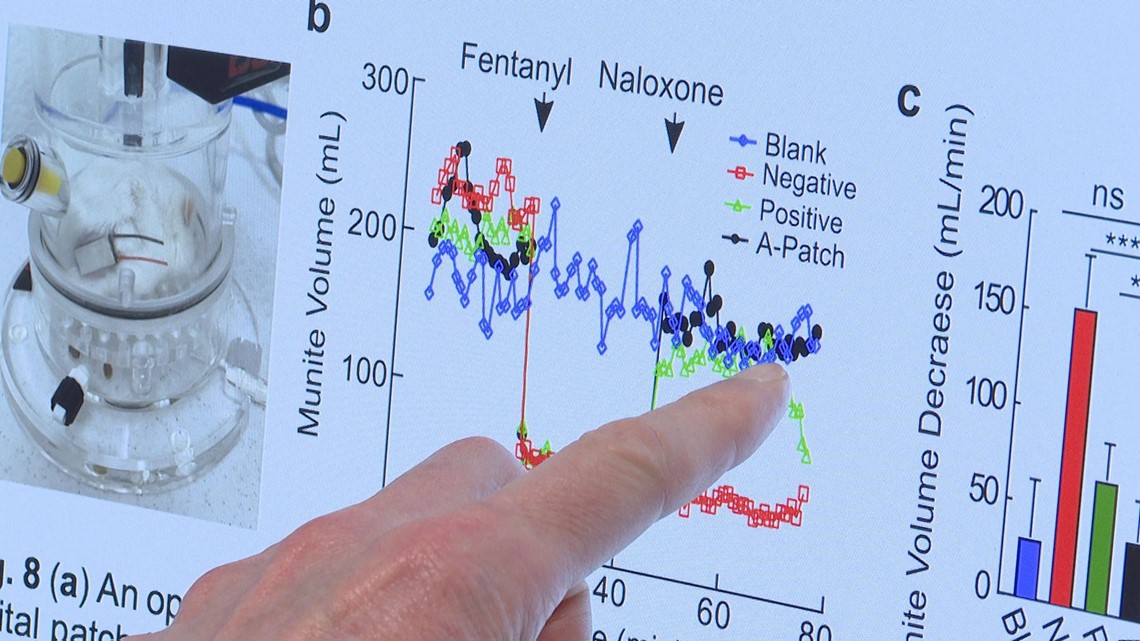BLOOMINGTON, Ind. — Researchers at Indiana University are developing a new device designed to combat opioid overdoses.
For the past two years, a pair of researchers at IU have been creating a wearable patch that can deliver a lifesaving dose of naloxone to patients, with the power to reverse an opioid overdose.
"We are really happy, we are so grateful to get the funds to further put this research forward," said Feng Guo, a bioengineer and assistant professor of intelligent systems engineering at the campus in Bloomington
The medication, Guo said, will come through the patch from microneedles instead of one big needle, minimizing injection pain as it enters the patient.
"For delivering drugs across the skin, you want as many points of entry as possible if you want to administer it rapidly, and that's what this patch is really good for," said Ken Mackie, professor of psychological and brain sciences at IU.
“This microneedle patch is minimal pain or painless and very easy for us to handle for the drug delivery,” Guo said.
They're currently testing the patch in mice before it can make it to human testing, but just getting the technology ready wasn't simple.


"A big chunk of this project is kind of educating the computer to understand when a respiratory arrest is about to happen," Mackie said.
So how does it work?
Mackie and Guo say their patch has two components. The first is a sensor that measures oxygen in the blood, pulse, respiratory rate and blood pressure. If those levels start pointing toward an oncoming overdose, indicating respiratory arrest is imminent, it triggers the other side of the patch to deliver a dose of naloxone.
The patch continues to monitor your vitals, connected through an app for details, that can determine if another dose of naloxone is needed while alerting the patient and first responders to help.
“Community availability of nasal Narcan has helped save a lot of people. But there’s still these clear situations like someone with therapeutic opioids who is at risk for overdose who may be alone or asleep with no one really watching them and they still die of overdose. This would be a potential treatment for them,” Mackie said.
The patch is expected be rolled out first for testing to those who take prescribed opioids.
"And then," Mackie said. "If it proves effective, see how it can be given out and applied to the wider population."
Researchers hope to have their patch prototype ready for use in humans in around three years.
“It is neat to be working on something that will potentially save lives,” Mackie said.
What other people are reading:

